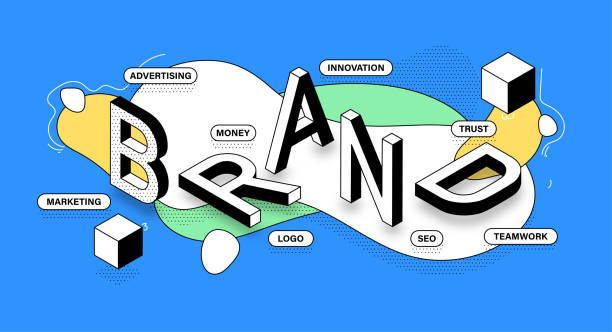Is your business struggling to stand out in a crowded market? You’re not alone. In a world where customers have endless choices, creating a memorable and trustworthy brand is more important than ever. The way your business is perceived by the public is no accident; it’s the result of strategic brand development. But what exactly is brand development, and how can it help you elevate your business? So, in this guide, we’ll walk you through the essentials of a brand development strategy, explaining how each step can boost your visibility, strengthen customer loyalty, and improve your bottom line.
What Is Brand Development?
At its core, brand development is a comprehensive process of defining your business’s personality, values, voice, and visual identity. Additionally, it’s about creating a unique identity that resonates with your target audience and builds long-term customer relationships. Also, brand development doesn’t happen overnight—it’s an ongoing journey that evolves as your business grows and market dynamics change.
Why Brand Development Matters for Business Success
Think of some of the world’s most recognizable brands: Nike, Apple, Coca-Cola. What makes them so memorable? Additionally, their brand identity goes beyond their products; it embodies a consistent message, aesthetic, and relationship with their customers. So, this level of recognition doesn’t come by accident; it’s a direct result of brand development strategy approach. Also, here are some key ways a strong brand development strategy can elevate your business:
- Increased Visibility and Recognition
- A well-developed brand makes your business instantly recognizable. Additionally, consistent branding across all touchpoints—social media, website, product packaging—reinforces your presence in customers’ minds, creating familiarity and trust.
- Improved Customer Loyalty and Trust
- A strong brand identity fosters a connection with your audience, creating trust and loyalty. When customers feel aligned with your values, they’re more likely to choose your brand over competitors.
- Competitive Edge in the Market
- In crowded industries, a unique brand identity helps you stand out. Also, a clear message, combined with a memorable visual presence, can give you a significant advantage over competitors with less-defined brands.
- Better Financial Performance
- Companies with strong brands often experience higher revenue, customer retention rates, and market share. Additionally, a recognizable brand can justify premium pricing, helping to boost profit margins.
- Attraction of Top Talent
- A compelling brand not only draws in customers but also attracts employees who align with your values. People want to work for brands they admire, so a strong brand identity can help you attract and retain talented individuals.

Steps to Building a Successful Brand Development Strategy
-
Define Your Brand Purpose and Values
- Start by identifying your brand’s “why.” Why does your business exist, and what values drive it? So, answering these questions will help you form a clear mission and purpose, which will guide every other aspect of your branding.
-
Know Your Target Audience
- Successful branding connects emotionally with the right audience. Additionally, create detailed personas for your ideal customers, including demographics, interests, pain points, and purchasing behavior. Also, knowing who your audience is allows you to tailor your message and visuals in a way that resonates deeply.
-
Craft a Unique Value Proposition (UVP)
- Your UVP is a short, compelling statement that explains why customers should choose your brand over others. It should highlight your unique strengths, such as quality, customer service, innovation, or specific product features that set you apart.
-
Develop a Consistent Brand Voice and Message
- The way you communicate with your audience plays a big role in how they perceive your brand. Whether you aim to be friendly, authoritative, witty, or empathetic, maintaining a consistent voice across all platforms is key to building trust.
-
Design a Memorable Visual Identity
- Visuals are the face of your brand, encompassing your logo, color scheme, typography, and overall style. A memorable, professional visual identity not only catches attention but also communicates your brand’s personality and values at a glance.
-
Implement a Content Strategy Aligned with Your Brand
- Content is one of the most effective ways to showcase your brand’s expertise, values, and personality. Additionally, create valuable content that resonates with your audience and positions your brand as an authority in your industry. Also, this might include blog posts, social media updates, videos, or even newsletters.
-
Leverage Social Media to Build Brand Personality
- Social media platforms are ideal for showcasing your brand’s personality and values. Moreover, use these channels to connect with your audience on a personal level, engaging with comments, sharing user-generated content, and offering behind-the-scenes glimpses.
-
Consistency Is Key
- A brand that looks and sounds different across platforms can confuse customers. Also, ensure that your messaging, visuals, and customer experience are consistent, from your website to customer service emails to social media interactions.
-
Gather and Act on Customer Feedback
- Don’t assume you know how customers perceive your brand—ask them. Additionally, use surveys, social media polls, and reviews to understand customer opinions. Also, this feedback is invaluable for refining your brand’s message and offerings over time.
-
Monitor and Adapt Your Strategy
- Branding is not a “set it and forget it” process. Furthermore, regularly monitor your brand’s performance, industry trends, and customer feedback to make necessary adjustments. So, flexibility is essential for staying relevant in a rapidly changing market.

Measuring the Impact of Your Brand Development Strategy
- Brand Awareness Metrics
- Track metrics like website traffic, social media mentions, and search engine rankings to gauge how well your brand is known. Additionally, growth in these areas often reflects the success of your brand awareness efforts.
- Customer Loyalty and Retention Rates
- Use repeat purchase rates, customer retention metrics, and loyalty program participation as indicators of your brand’s strength. So, strong brands tend to have more loyal customers who return time and again.
- Brand Sentiment Analysis
- Monitoring customer sentiment through reviews, social media comments, and surveys can provide insight into how people feel about your brand. Moreover, positive sentiment is a sign that your branding resonates with your audience.
- Sales Performance
- Ultimately, a successful brand development strategy should contribute to improved sales. Also, track revenue growth, conversion rates, and average order values to understand the financial impact of your branding efforts.
- Employee Engagement and Retention
- A powerful brand can inspire not only customers but also employees. Furthermore, high employee satisfaction and low turnover can indicate a strong internal brand culture that resonates with your team.
Real-World Examples of Effective Brand Development
- Apple: Consistent Innovation and Sleek Design
- Apple’s brand strategy is built on innovation, simplicity, and aesthetic appeal. So, from product design to advertising, Apple has created an image that resonates with tech enthusiasts and creative professionals alike.
- Nike: Empowering Messages and Community Engagement
- Nike’s brand stands for empowerment, athleticism, and self-belief. Additionally, through powerful storytelling, sponsorships, and a consistent “Just Do It” message, Nike has become synonymous with motivation and excellence.
- Airbnb: Belonging Anywhere
- Airbnb’s brand development centers around the concept of belonging, connecting travelers with a sense of home wherever they go. So, this strategy helped Airbnb differentiate itself in the hospitality industry by building a strong emotional connection with users.

Final Thoughts: Why Investing in Brand Development Pays Off
In today’s competitive business landscape, brand development strategy is no longer optional—it’s a necessity. Additionally, a strategic approach to brand development can set you apart from competitors, deepen customer loyalty, and position your business for long-term success. Also, by investing time and resources into building a consistent and compelling brand identity, you create a foundation that will drive customer connections, financial growth, and market differentiation.
So, if you’re ready to elevate your business, start with your brand. So, build it with purpose, communicate it with consistency, and watch as it resonates with customers, old and new.








